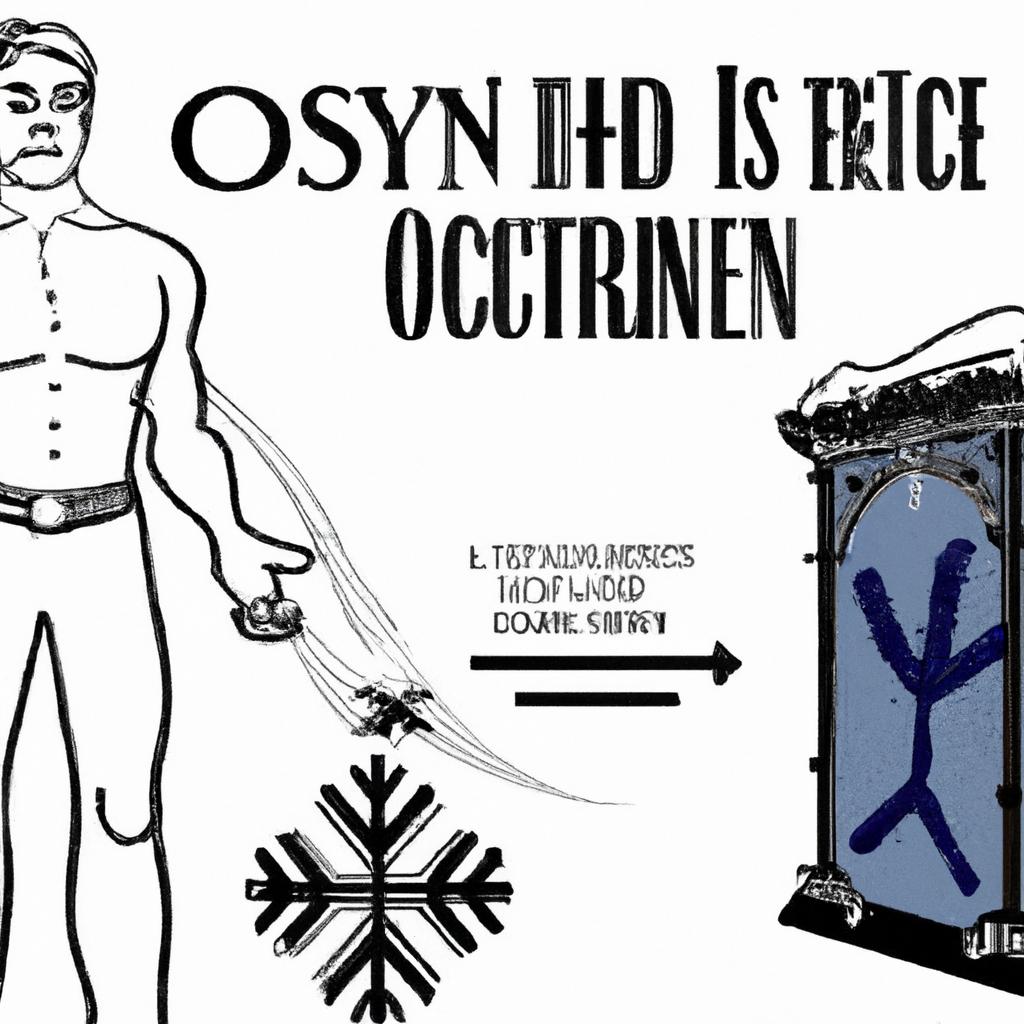In the realm of popular culture and urban legend, few figures loom as large as the enigmatic Walt Disney. Perhaps one of the most enduring and fascinating tales surrounding the legendary animator and entertainment mogul is the whispered rumor of his cryogenically frozen body. As legal experts in estate planning and probate matters, the Morgan Legal Group of New York City delves into this curious case with a discerning eye, separating fact from fiction and exploring the legal implications of this captivating conspiracy theory. Join us on a journey as we unravel the mysteries of Walt Disney’s purported frozen fate.
The Myth of Walt Disney’s Cryogenic Frozen Body
There has been a long-standing myth surrounding the idea that Walt Disney’s body is cryogenically frozen, waiting to be brought back to life in the future. However, this myth has been debunked time and time again by experts in the field. There is no evidence to suggest that Walt Disney’s body was ever frozen after his passing.
Despite the lack of credibility surrounding this myth, it continues to persist in popular culture. It is important to separate fact from fiction, especially when it comes to such sensitive topics. The idea of cryogenically freezing a body may seem like something out of a science fiction novel, but in reality, it is not a practice that has been proven to work. As estate planning attorneys, we urge individuals to focus on more practical and realistic methods of planning for the future, such as creating a Will and establishing trusts.

Examining the Legal and Ethical Implications
Some may be familiar with the urban legend that Walt Disney had his body cryogenically frozen after his death in hopes of being revived in the future. While this rumor has been debunked, the idea of cryogenic freezing raises interesting legal and ethical questions. One of the main legal implications is the issue of consent. If someone wants their body to be cryogenically frozen after death, they must have clearly expressed this wish in a legal document, such as a will or trust. Without explicit consent, cryogenic freezing could potentially violate the deceased individual’s rights.
From an ethical standpoint, cryogenic freezing raises questions about the line between life and death. Is it morally permissible to try to cheat death by freezing one’s body in hopes of being revived in the future? Additionally, there are concerns about the resources and technology needed to support cryogenic freezing, as well as the potential impact on the environment. As legal and ethical experts, it is essential to carefully consider the implications of cryogenic freezing and ensure that any decisions made are in line with the law and ethical standards.

Implications for Estate Planning and Trusts
When exploring the , one interesting case that comes to mind is the rumored cryogenic freezing of Walt Disney’s body. While the authenticity of this claim remains disputed, the idea of preserving one’s body in hopes of future revival raises intriguing questions in the realm of estate planning. How does one incorporate such unconventional wishes into their estate plan? What legal ramifications might arise from attempting to execute such a request?
Considering the complexities involved in honoring such unique end-of-life arrangements, it becomes crucial for individuals to seek professional guidance from estate planning experts. Our team at Morgan Legal Group specializes in navigating the intricacies of estate planning, probate, elder law, Wills, and trusts. By working closely with our clients, we ensure that their final wishes are not only legally sound but also reflective of their values and beliefs.

Understanding the Facts and Fiction Behind the Controversial Rumors
There has been a long-standing myth surrounding the famous creator of Disney, Walt Disney, and the idea that his body was cryogenically frozen after his death. This controversial rumor has circulated for years, leading to widespread speculation and intrigue among fans and skeptics alike. However, it is important to separate fact from fiction when it comes to this sensationalized topic.
Contrary to popular belief, there is no concrete evidence to support the claim that Walt Disney’s body was cryogenically frozen. In fact, the Disney family has vehemently denied these rumors, stating that Walt Disney was cremated after his death in 1966. While the concept of cryonics may be fascinating, it is crucial to rely on verified information rather than sensationalized rumors when discussing such sensitive topics.
Q&A
Q: Is it true that Walt Disney’s body is cryogenically frozen?
A: Despite rumors and urban legends, there is no evidence to suggest that Walt Disney’s body is actually cryogenically frozen.
Q: Why do some people believe that Walt Disney’s body is frozen?
A: The belief likely stems from the fact that Disney was interested in new technologies and the idea of preserving life. However, there is no verifiable information to support this theory.
Q: What is cryogenic freezing?
A: Cryogenic freezing is a process in which a body or object is preserved at extremely low temperatures, typically using liquid nitrogen. The goal is to potentially revive the individual or object in the future.
Q: Are there any famous individuals who have actually been cryogenically frozen?
A: Yes, there have been a few well-known individuals who have been cryogenically frozen, such as baseball legend Ted Williams and British writer James Bedford.
Q: What does the Walt Disney Company have to say about the rumors surrounding Walt Disney’s body?
A: The Walt Disney Company has officially denied any claims regarding Walt Disney’s body being cryogenically frozen. The company maintains that Disney was cremated and his ashes interred at Forest Lawn Memorial Park in Glendale, California.
Insights and Conclusions
In conclusion, the rumors surrounding Walt Disney’s cryogenic frozen body continue to spark curiosity and speculation. While some believe that the legendary animator and entrepreneur lies in a state of suspended animation awaiting a future revival, others dismiss these claims as mere urban legends. Whether fact or fiction, the mystery surrounding Disney’s final resting place serves as a reminder of the enduring fascination with the man behind the magic. As we continue to unravel the truth behind this enigmatic tale, one thing remains certain – Walt Disney’s legacy lives on, frozen in time for generations to come.
 Walt Disney Cryogenic Frozen Body: The Science and Mystery Behind It
Walt Disney Cryogenic Frozen Body: The Science and Mystery Behind It
Have you ever wondered what would happen to your body after you die? Will you be buried or cremated? Over the years, there have been various alternatives proposed to traditional burial and cremation methods, one of which is cryogenic freezing. But did you know that one of the most influential figures in entertainment, Walt Disney, had his body cryogenically preserved after his death? This has sparked a lot of interest and debate – how and why was Walt Disney’s body cryogenically frozen? In this article, we will dive into the science and mystery behind Walt Disney’s cryogenic frozen body.
What is Cryogenic Freezing?
Cryogenic freezing, also known as cryopreservation, is a process that involves preserving a body or living tissue at extremely low temperatures. The goal of cryogenic freezing is to preserve the body or tissue in a suspended state without any biological activity, at a temperature where all decay processes would stop. This is done in the hopes that one day, the body or tissue can be revived and restored to its normal functioning state.
The Cryogenic Freezing Process
The process of cryogenic freezing involves several steps. First, the body is cooled to a temperature slightly above freezing and then injected with a cocktail of chemicals to protect the cells from damage caused by ice crystals. Next, the body is placed in a container filled with liquid nitrogen, which keeps it at a temperature of around -196 degrees Celsius. At this temperature, all biological activity ceases, and the body is essentially in a state of suspended animation.
Why Did Walt Disney Choose Cryogenic Freezing?
There has been much speculation as to why Walt Disney chose to have his body cryogenically frozen after his death. Some believe that he was inspired by the 1960 novel “The Cryonic Man” by John Wood Campbell Jr, which explores the possibility of cryogenically preserving humans. Others believe that Disney’s decision was influenced by his fascination with technology and his desire to be a part of future advancements.
The truth is, no one knows for sure why Walt Disney made this decision. Some argue that he was skeptical of traditional burial and cremation methods, while others believe that he truly believed in the potential of cryogenic freezing. Whatever his reasons may have been, one thing is certain – Walt Disney’s decision has sparked a lot of interest and curiosity in the world of cryogenics.
The Mystery of Walt Disney’s Frozen Body
After Walt Disney’s death in 1966, it was widely believed that he had been cryogenically frozen. However, there has been no official confirmation of this from the Walt Disney Company or the Disney family. In fact, a few years after Disney’s death, his daughter Diane Disney Miller released a statement debunking the rumors of her father’s cryogenic freezing.
But despite this, the rumors continue to persist. Some have claimed to have seen Disney’s frozen body at a cryonics facility, while others believe that he is being kept at the Walt Disney World Resort. It is important to note that there is no concrete evidence to support these claims, and they remain purely speculative.
The Science Behind Cryogenic Freezing
While the idea of cryogenic freezing may seem like something out of a sci-fi movie, there is actually some truth behind it. The concept of stopping biological processes by freezing has been used for centuries in the form of freezing food and preserving tissues for medical purposes. However, the idea of preserving a human body for an indefinite period of time is still a matter of debate in the scientific community.
Some experts argue that the process of cryogenic freezing can cause irreversible damage to the cells, making revival and reanimation impossible. Additionally, the long-term effects of being cryogenically frozen are still unknown, as the technology is relatively new and has not been tested on humans.
Benefits of Cryogenic Freezing
Despite the controversy surrounding cryogenic freezing, there are some potential benefits that make it an appealing option for some individuals. Firstly, it offers an alternative to traditional burial or cremation, which some may find more comforting. Secondly, it holds the possibility of future revival and restoring the body to a healthy state, which could have significant implications for medical advancements.
Practical Tips for Cryogenic Freezing
If you are considering cryogenic freezing as an option, it is important to do thorough research and contact a reputable cryonics facility. The process can be costly and requires careful planning and preparations. It is also essential to have a clear understanding of the risks involved and to have a legal plan in place for your body after your death.
Conclusion
The concept of cryogenic freezing and the mystery surrounding Walt Disney’s frozen body continues to fascinate and intrigue people all over the world. While cryogenic freezing is still a relatively new and controversial concept, it offers some potential benefits and could have significant implications for the future of medical science.
Whether or not Walt Disney’s body is truly cryogenically frozen remains a mystery, but his decision has certainly sparked a lot of conversation and interest in the world of cryogenics. Ultimately, the decision to pursue cryogenic freezing should be a personal one, with careful consideration and thorough research. Who knows, maybe one day the technology will advance to the point where Walt Disney, and others who have been cryogenically frozen, can be revived and brought back to life.

